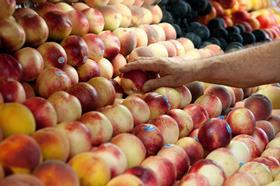
China’s lucrative pre-Luna Festival market looks ripe for Australian stonefruit exports.While fellow Southern Hemisphere suppliers have carved out strong footholds in the People’s Republic’s, the early availability of Australian fruit guarantees demand will ensue.
“Chile traditionally comes into the market in February, creating the perfect window for our fruit in the weeks leading right up to Chinese New Year celebrations (which begin on 19 February in 2015),” said Summerfruit Australia CEO John Moore.
An inability to secure direct market access has prohibited the Australian industry from capitalising on this window of opportunity to date, but Moore is confident that will soon change.
Chinese quarantine inspectors will be required to visit Australian orchards and packhouses prior to any favourable announcement. The summerfruit industry lodged its application for market access in 2006.Preliminary inspections on stonefruit orchards were held in December 2011, whilst audits were being carried out on cherry orchards. Moore is hopeful another inspection will be held in the lead-up to the 2014/15 season.
“Our fingers remain crossed but the indications we have received suggest negotiations moving in that direction,” Moore told Asiafruit. “We are confident our industry has put the necessary checks and balances in place to begin exports and anticipate some fruit will enter China this season.”
Australia’s application was re-prioritised for nectarines in early 2013; although Moore believed the industry could secure access for plums over coming seasons. The likely requirement to ship by seafreight means Australian peaches - which do not withstand lengthy reefer transit – are unlikely to enter the Asian nation until an amicable airfreight protocol can be reached.
Never the less, the Australian industry believes it has the product required to position itself in China, where Moore said stonefruit is one of the fastest growing import categories.
“Data from the World Apple Report shows stonefruit imports rose from 23,800 tonnes to 69,800 tonnes between 2011 and 2012,” Moore explained. “Australia’s reputation for producing the high quality, sweet fruit that so many Chinese consumers crave means we can capitalise on this growth.”
Australia currently produces around 50,000 tonnes of nectarines annually but Moore conceded this is well short of the volume required to run large-scale sales programmes across all price points. Instead, exporters are likely to target the increased spending power of China’s rapidly expanding middle class, particularly in the nation’s largest cities.
“Consumer research tells us that 48 per cent of consumers in tier one cities look to buy imported products, particularly around Chinese New Year,” Moore said. “The coordinated marketing programmes we are looking to develop will be focused on cities like Guangzhou, Beijing and Shanghai where we know even a small cross section of the market is a good market.”



